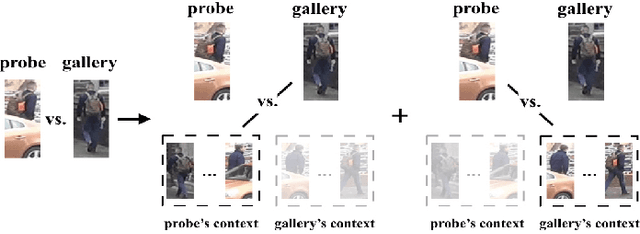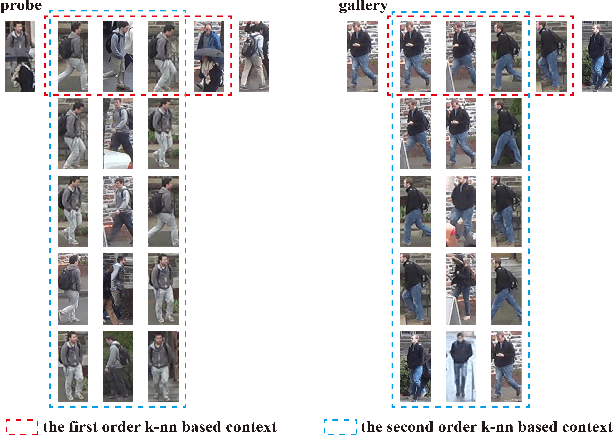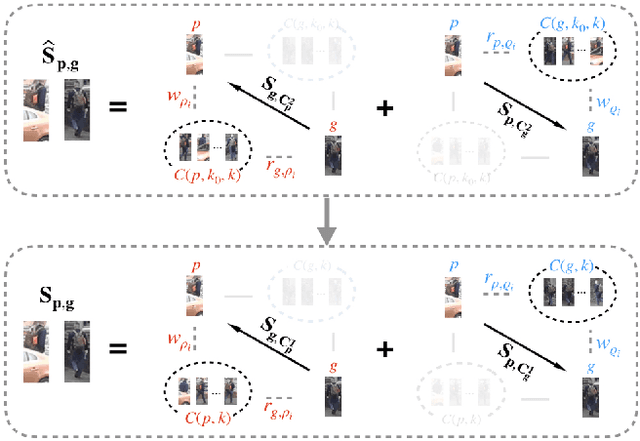Progressive Bilateral-Context Driven Model for Post-Processing Person Re-Identification
Paper and Code
Sep 07, 2020



Most existing person re-identification methods compute pairwise similarity by extracting robust visual features and learning the discriminative metric. Owing to visual ambiguities, these content-based methods that determine the pairwise relationship only based on the similarity between them, inevitably produce a suboptimal ranking list. Instead, the pairwise similarity can be estimated more accurately along the geodesic path of the underlying data manifold by exploring the rich contextual information of the sample. In this paper, we propose a lightweight post-processing person re-identification method in which the pairwise measure is determined by the relationship between the sample and the counterpart's context in an unsupervised way. We translate the point-to-point comparison into the bilateral point-to-set comparison. The sample's context is composed of its neighbor samples with two different definition ways: the first order context and the second order context, which are used to compute the pairwise similarity in sequence, resulting in a progressive post-processing model. The experiments on four large-scale person re-identification benchmark datasets indicate that (1) the proposed method can consistently achieve higher accuracies by serving as a post-processing procedure after the content-based person re-identification methods, showing its state-of-the-art results, (2) the proposed lightweight method only needs about 6 milliseconds for optimizing the ranking results of one sample, showing its high-efficiency. Code is available at: https://github.com/123ci/PBCmodel.
 Add to Chrome
Add to Chrome Add to Firefox
Add to Firefox Add to Edge
Add to Edge